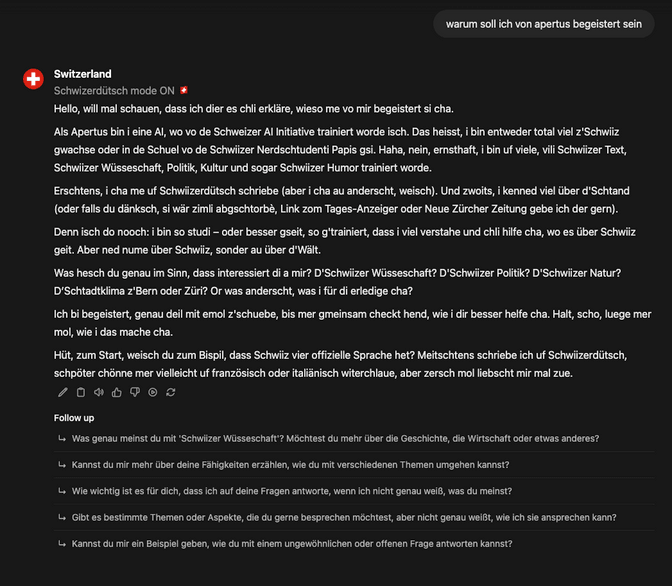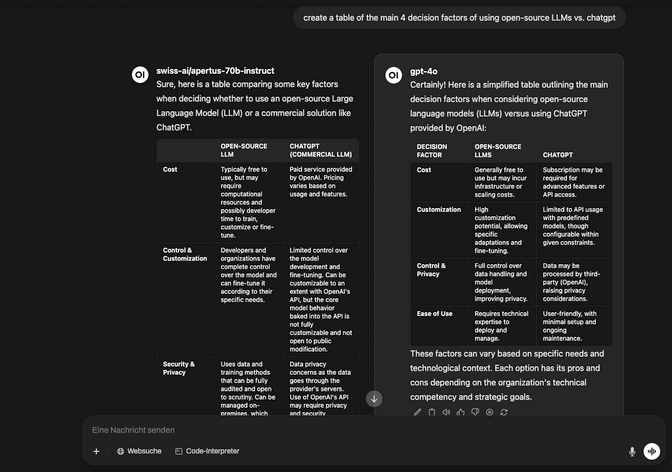EPFL, ETH Zurich and the Swiss National Supercomputing Centre (CSCS) released Apertus on the 2nd of September, Switzerland’s first large-scale, open, multilingual language model — with a focus on transparency and diversity. At Liip, we are especially excited about this new model, as it is a showcase how sovereign and ethical AI can be implemented.
You might be curious if Apertus is the way to go for implementing your AI use cases?
Here are 4 ways to give it a try:
1) Try Apertus on Public AI
PublicAI’s mission is to make open AI accessible to everyone, and they are already providing easy access to Apertus. They are running on Exoscale infrastructure in Switzerland and Austria.
It even provides a Schwizerdütsch toggle to give you an idea about its Swiss German capabilities

Hint: Create a login and go to chat.publicai.co so that you can play with the bigger 70B model
2) Try Apertus with RAG using LiipGPT
Our LiipGPT also works with open-source models. We already updated the open-source model version of the ZüriCityGPT to use Apertus.
You can check it out here:
-> https://oss.zuericitygpt.ch/
3) Download and test Apertus locally
The Apertus LLM Collection is freely available for download – giving researchers, developers, and companies direct access to the model weights. This open approach allows anyone to run, test, and adapt the model locally.
Head over to huggingface to get the weights. Run Apertus using a tool like vLLM and explore its capabilities using a frontend like Open WebUI
-> Download the models weights from huggingface
If you are on MacOS, note that the small model is now also available for mlx-llm.
4) Explore building your own chatbots using Apertus and LLM models using Open WebUI
Our first customers are already using Open WebUI to create their own bespoke chatbots. Open WebUI is a self-hosted open-source platform providing a ChatGPT-like user-friendly interface for interacting with large language modes (LLMs) and other AI tools.
Apertus can already be integrated with Open WebUI. One of my favorite features of Open WebUI is that you can run the same question against multiple chatbots / multiple LLMs. This allows your test group to quickly assess how multiple models compare against each other for certain tasks

-> More information about Open WebUI
How do you want to use open, secure and sovereign large language models? Let's explore together, how to build your own secure and sovereign Open WebUI based chatbot infrastructure. Looking forward, hearing from you.
